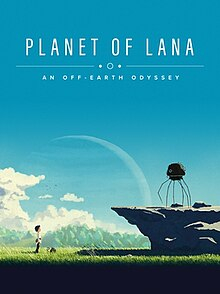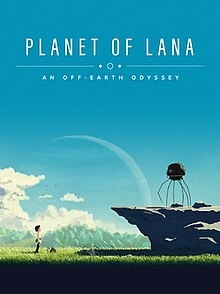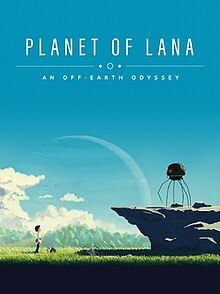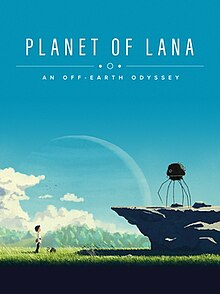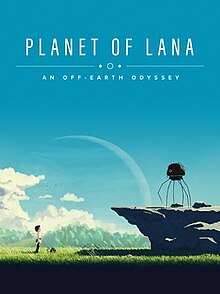
Planet of Lana (PS5) - Review
by Lee Mehr , posted on 18 May 2024 / 2,177 ViewsImagine Mad Men's Don Draper waltzing into your office with this pitch: Playdead platformer meets Studio Ghibli. How have we gone this long before such an ingenious move came to fruition? Fortunately for us, it happened after Co-Director/Designer Adam Stjärnljus put a simple Ghibli-inspired drawing up on a wall and essentially asked the same question. The commendable drive to realize said picture resulted in him and his wife, Maria Brunsson, founding Wishfully Studios. The result? For a debut outing, it's genuinely impressive to see Planet of Lana rank so high among other me-too platformers in this phylum.
Per the title's namesake, the first words heard by our young protagonist are "Laaaaa-nah!" Naturally, she replies back with "Eeeeee-lo!" At first, it’s a small running gag between two playful sisters that are also the only words you can grasp of this alien dialect. In keeping with other minimalist platformers, most of Lana's characterization is shown through the world and her interactions. Running, crouching, and occasionally stumbling through their beachfront hamlet reveals Lana's diminutive stature and inexperience compared to her older sister, while also establishing the gameplay's basics. For a time, her human limitations and continual chasing games with her sister are sweet with a touch of melancholy. But Lana's chasing turns from harmless fun to singular objective after the robots invade and steal Ilo in front of her.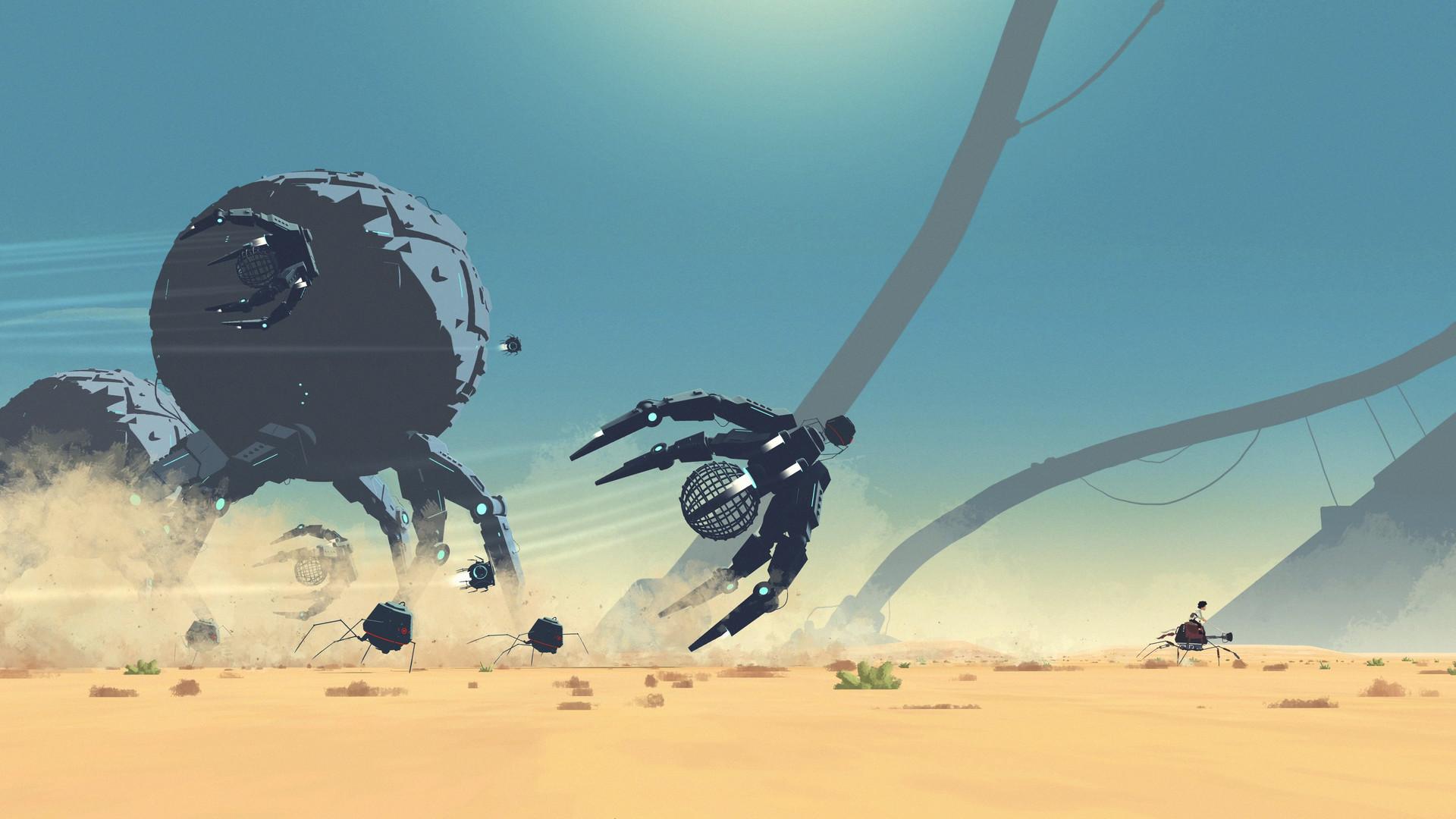
It doesn't take long to reach the inciting incident either; in fact, its brevity successfully captures a type of tonal whiplash once the invading army begins swooping every humanoid in sight. To have such a brief reprieve with your community – working adults and playing children alike – in a state of bliss, and then hastily return to their piercing cries whilst they're stuffed into the cages of flying robotic quadrupeds, emphasizes this enemy's technological dominance, swiftness, and hostility. That's why even the first sighting of the "small" spider-like automaton with its strident robotic barks is so unsettling. Once past the otherworldly aesthetic and sound design, you settle into the expected routine of sleuthing past its vision cone within a 2.5D environment.
For those who've rehearsed with Inside, Stela, and more, these gameplay trappings will feel familiar. Navigating past beasts and machines alike typically involves hiding in conveniently-placed bushes or at a different elevation than their line of sight on a 2D plane. The other 'half-dimension' is considered when background items, such as ropes, ladders, and so on, come to the foreground when pushing up on the control stick and grabbing onto them. Even with the basic box-moving & lever-pulling templates, it's nevertheless a daunting journey against the odds; fortunately, Lana's not flying solo.
Not long after egressing from her home, Lana happens upon a small cat-mouse hybrid named Mui (pronounced "mew"). They essentially serve as Yin & Yang for the game's design: she's able to shove big boxes and swim, whilst Mui leaps impressive heights to knock down swingable ropes. It doesn't stop there though. As the game progresses, Lana comes across interesting gadgets that continually build their dependency on one another. It's the sort of necessary half-measure that allows Planet to carve out some nuances that make you think beyond what the main character can manage. Sometimes they'll test your spatial reasoning and sometimes they'll test your preservation instincts – especially when using this adorable companion as a lure. 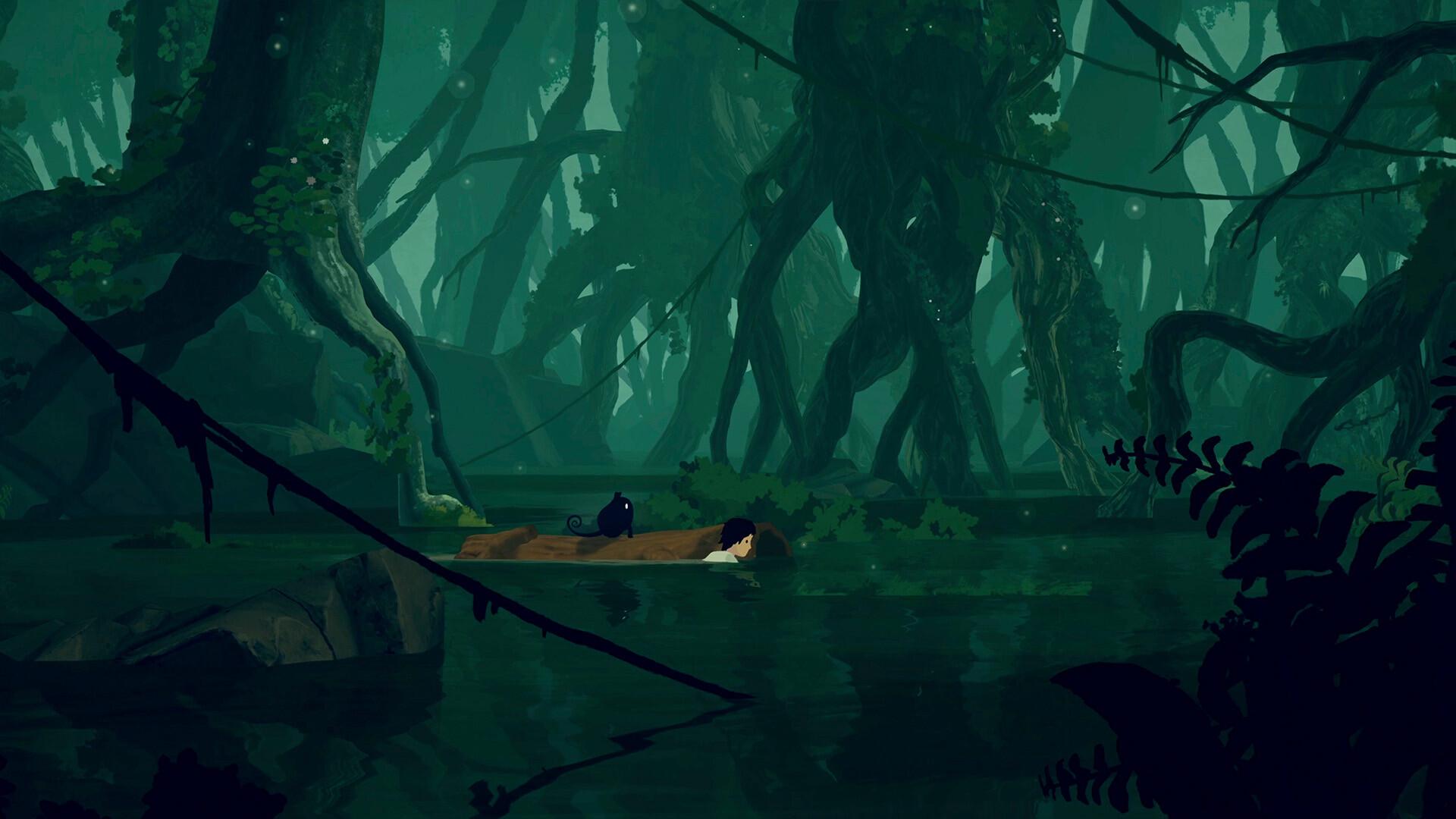
Those stronger multi-step puzzles aren't consistent enough, unfortunately. For each one that utilizes audio frequencies – similar in kind to Somerville's best ending, only less opaque in execution – or controlling a little robot, there are two or three repeats like commanding Mui to hop up and drop down a rope. While I'm not fundamentally against padding in certain contexts – after all, it can be a good way to cool down after a tough brainteaser or intense set piece – there is a limit. And since the design's go-to approach is safety and familiarity, the padding becomes more noticeable.
The vast majority of the game's runtime is centered on puzzle-solving, but some intense sequences rely on quick-time events. While I recognize the motivation behind these rare moments, especially with the incredible cinematography during this grand desert scene, where the camera becomes more active with Lana's chase, I'm still a stickler for how jarring it feels in execution. Even setting aside if you think quick-time events are stale altogether (I disagree), they should be treated more like the infrequent expectation rather than an 8th-inning inclusion here. It's rather telling – and annoying – that it's the one gameplay mechanic that can be toggled on/off, yet coddling tutorial reminders are (currently) set in stone.
Even with these sizable complaints, at least Wishfully makes a stronger mechanical splash than most Playdead copycats. The strong bond between Lana & Mui feels organic in a way that also feeds into the larger narrative. Even smaller details like death animations contextualize the real and direct threat posed by these enemies. It's a weird focal point I've brought up before, as though child fail states speak to some immutable quality, but I'd argue there’s a case to be made in the disparity between Lana or Mui getting electrocuted by a robot versus pretend-bit by a hornless rhino/bull creature. Each robot feels genuinely more terrifying by how ruthless & efficient they appear in those fail states.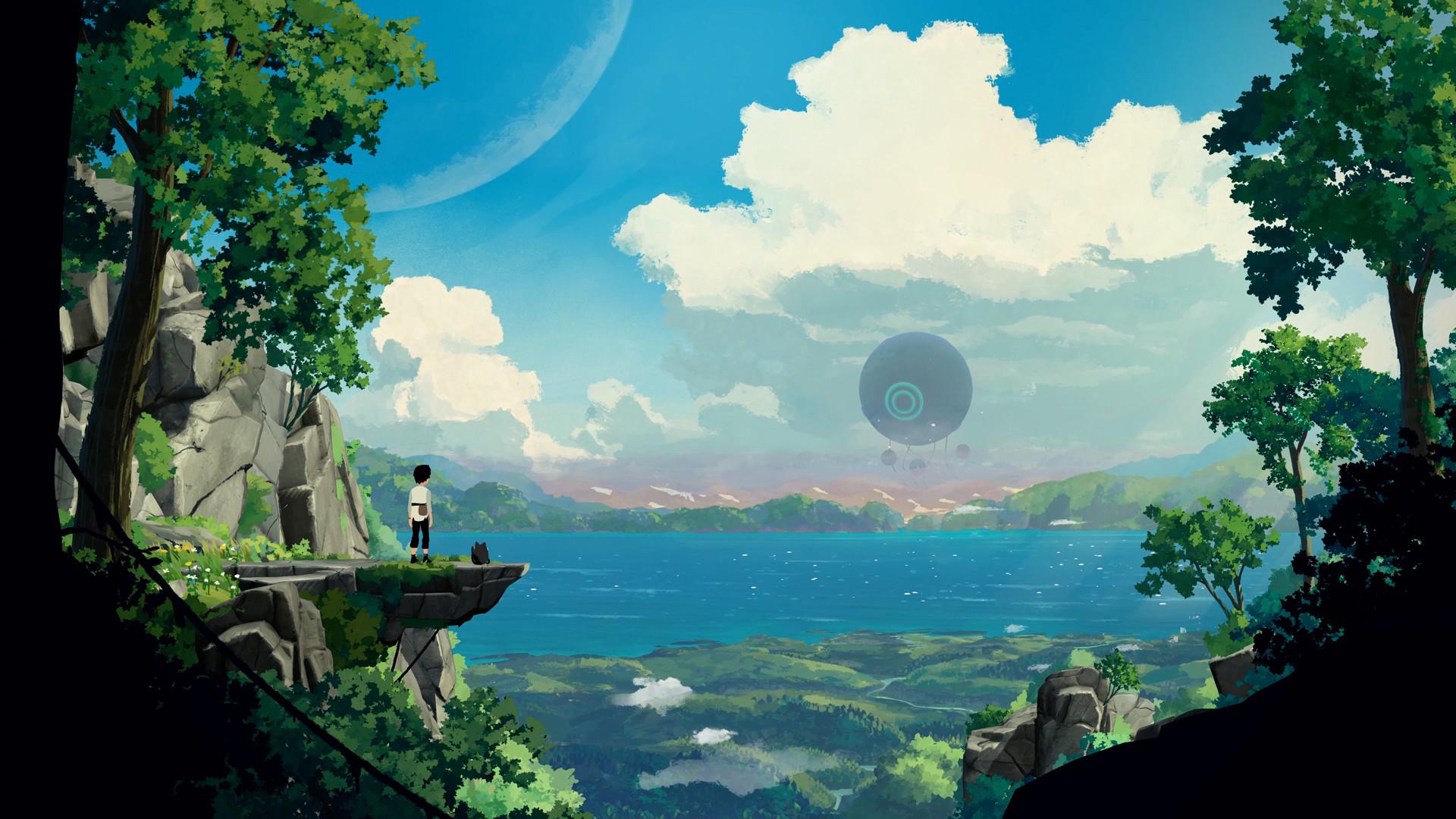
Animations aside, Wishfully's presentational gifts truly shine through this lovely world. It's practically a reflex to vaunt this painterly aesthetic and that won't stop being the case if artists keep showing these results. Beyond the hand-painted feel of the vibrant verdure, fluffy clouds, and more, there's a vibrancy to the foreground & background that give these 2D levels a sense of scale. This works for both the pleasant and ominous scenes. One of Planet's most memorable vistas is seeing your main target – a miniature-scale Death Star with an LED eye – hovering in the far distance while repeating a booming rhythm. Combine Studio Ghibli's visual inspiration with Takeshi Furukawa's (The Last Guardian) orchestral work and you get a consistent feast for the eyes and ears.
Studio Ghibli's mark doesn't just stop at the visual tone or some cutesy animals, but also in exploring our relation to nature. While it's really just giving the broad strokes, there's something substantial in how so much is conveyed through this unintelligible dialect. As stated before, the only things you concretely know are a few names. Whether briefly conversing with Ilo, Mui, or someone else, so much is reliant on a voice actor's tone and the character's emotive expressions to capture the general idea. Beyond the personal dynamics, signs of past civilizations in the form of paintings and hieroglyphs are dotted across the landscape and fused with certain puzzles. Planet can be completed in one sitting (4-hour non-completionist run), but the way its environmental storytelling is so expertly wedded to Lana's growth makes for a well-bodied tale.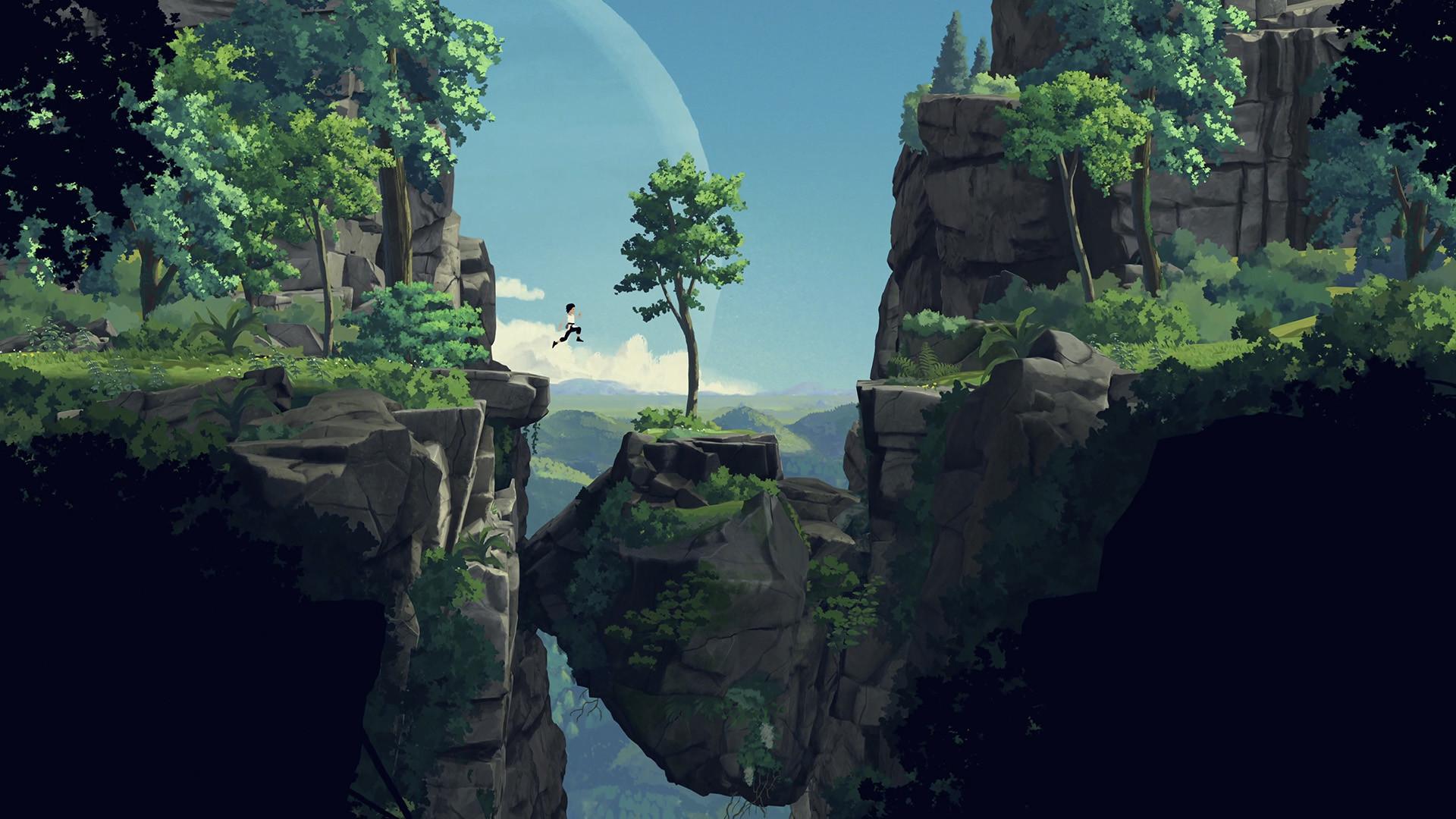
What makes Planet of Lana among the better success stories is how it emulates without forgetting to incorporate its own personality. It's a "Playdead platformer meets Studio Ghibli" without stopping there. What on its surface is a determined rescue mission blossoms into a planet-wide expedition succinctly tying a foreign world's history and Lana's heroic journey to interrogate our own presently discordant relationship with nature. Although – sadly – better strengths in presentation and theme aren't as evident within its game design, at least there are some quality nuances to the formula. Those half-measures do reveal Wishfully too often retreating to safety, but the collected successes elsewhere still make for an impressive debut that's easily worth playing.
Contractor by trade and writer by hobby, Lee's obnoxious criticisms have found a way to be featured across several gaming sites: N4G, VGChartz, Gaming Nexus, DarkStation, and TechRaptor! He started gaming in the mid-90s and has had the privilege in playing many games across a plethora of platforms. Reader warning: each click given to his articles only helps to inflate his Texas-sized ego. Proceed with caution.
VGChartz Verdict
7.5
Good
This review is based on a digital copy of Planet of Lana for the PS5, provided by the publisher.
More Articles
I enjoyed my time with this game. While it's not as good as Limbo or Inside, it still scratches that itch.
Indeed. That's why I'm surprised by Machina's response too. It was kinda nice to play a 'Playdead-like' platformer that felt like a easy recommendation; then again, maybe I'm partially biased with lesser ones I'd recently played.
Limbo, and to a slightly lesser extent Inside, are two of my favourite games, so I was really looking forward to Lana after I saw it get great reviews and hold a very high user rating on Steam, but when I finally played it I found it to be so disappointing.
The only exceptional thing about it is the art style, which is truly beautiful, but almost everything else is pedestrian at best. The gameplay is incredibly bland, the puzzles are simplistic & repetitive. It all just felt so rote. Now, if you released Limbo today, you'd probably be able to argue much the same regarding the gameplay (at least in the first half), but Limbo was such a cool experience; it oozed atmosphere.
Somehow Lana lacks atmosphere, despite the excellent art style and an 'alien machine invasion' theme that should've added a tonne of contrast and sense of dread. Instead it's all so by-the-numbers that I felt nothing when the village was destroyed and its people were captured; I felt nothing when I came across the first machine; and I felt nothing when I was killed for the first time by one of them. It was the exact opposite with similar encounters in Limbo and Inside.
Lana is very pretty but, unfortunately, also very shallow.
Damn! Some shots fired there. I'll be honest, I'm quite surprised by the lacking atmosphere complaint - although I can follow that viewpoint. I'm going to flip the order of your complaints for the way I see it.
Atmosphere - I suppose how well you connect with that world comes back to those first few minutes. Since Lana's world felt so idyllic and so nice, I could tangibly latch onto everything being ripped out from under her. In most circumstances, I can understand needing a more substantial buildup with this community, but that also weirdly worked for me since it felt like the aliens stole my due time with them.
Puzzles - I'm less surprised with this b/c the crux of your engagement is whether or not you're sold on the Lana & Mui combo for even insignificant stuff. One great example: after lifting Mui's cage you then have to climb onto said lifted cage to reach a higher platform. I know that's so basic on paper, but I appreciate that extra bit of context. While I agree it does recycle too often, I think enough small character bits in between kept that from distracting me.
On the bright side, Playdead seems primed to show us something during this year's not-E3.
Well, that were a couple of spoilers, but I thought that the music should be pretty good, because it's the same composer as for The Last Guardian.
Aside from the puzzle I mentioned, I don't really think what I said qualifies as a spoiler. Apologies if you wanted to go in fresh, but what I'm describing barely scratches the surface.
I meant Machina ^^

























